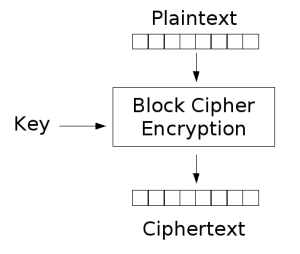Top Qs
Timeline
Chat
Perspective
Functional encryption
From Wikipedia, the free encyclopedia
Remove ads
Functional encryption (FE) is a generalization of public-key encryption in which possessing a secret key allows one to learn a function of what the ciphertext is encrypting.
Formal definition
More precisely, a functional encryption scheme for a given functionality consists of the following four algorithms:
- : creates a public key and a master secret key .
- : uses the master secret key to generate a new secret key for the function .
- : uses the public key to encrypt a message .
- : uses secret key to calculate where is the value that encrypts.
The security of FE requires that any information an adversary learns from an encryption of is revealed by . Formally, this is defined by simulation.[1]
Remove ads
Applications
Functional encryption generalizes several existing primitives including Identity-based encryption (IBE) and attribute-based encryption (ABE). In the IBE case, define to be equal to when corresponds to an identity that is allowed to decrypt, and otherwise. Similarly, in the ABE case, define when encodes attributes with permission to decrypt and otherwise.
Remove ads
History
Functional encryption was proposed by Amit Sahai and Brent Waters in 2005[2] and formalized by Dan Boneh, Amit Sahai and Brent Waters in 2010.[3] Until recently, however, most instantiations of Functional Encryption supported only limited function classes such as boolean formulae. In 2012, several researchers developed Functional Encryption schemes that support arbitrary functions.[1][4][5][6]
References
Wikiwand - on
Seamless Wikipedia browsing. On steroids.
Remove ads

















